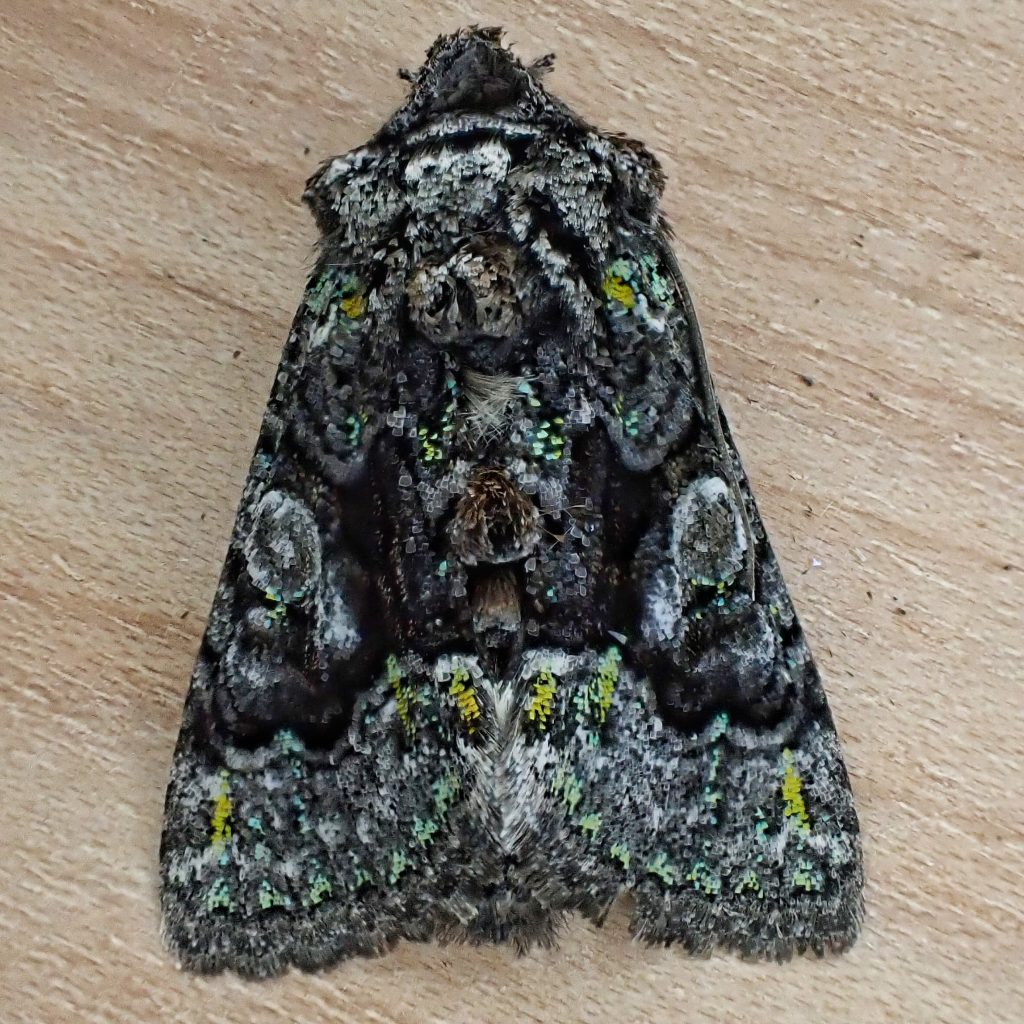
This member of the family Noctuidae is a common and beautiful moth of springtime forests and woodlands in the Pacific Northwest. It is a rare night of spring mothing when at least one of these doesn’t come to my lights. They are endearing to me because not only are they easy to identify (the yellow and gold scales are often reflected in the beam of a headlamp from ten feet away), they are also settlers, so that I can be continually thrilled by their intricate details all through the night.
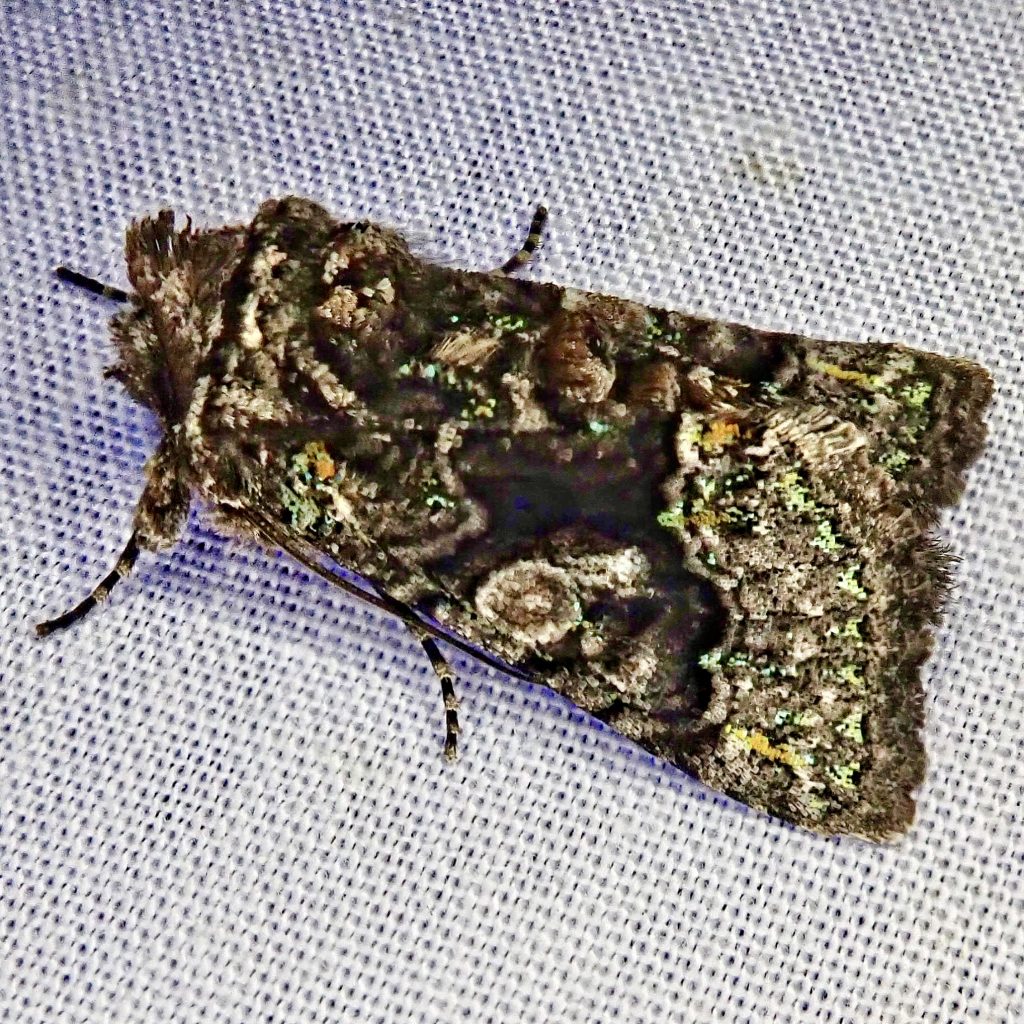
I have at times looked for their caterpillars on snowberry and honeysuckle, their primary larval hosts, but thus far I have had no success, which may be because they hide during the day and feed at night. Still, it is a shame, because they are said to be rather handsome, grey and brown with lengthwise undulating light and dark lines, as well as white crosswise lines. Yet another interesting organism to be on the lookout for!
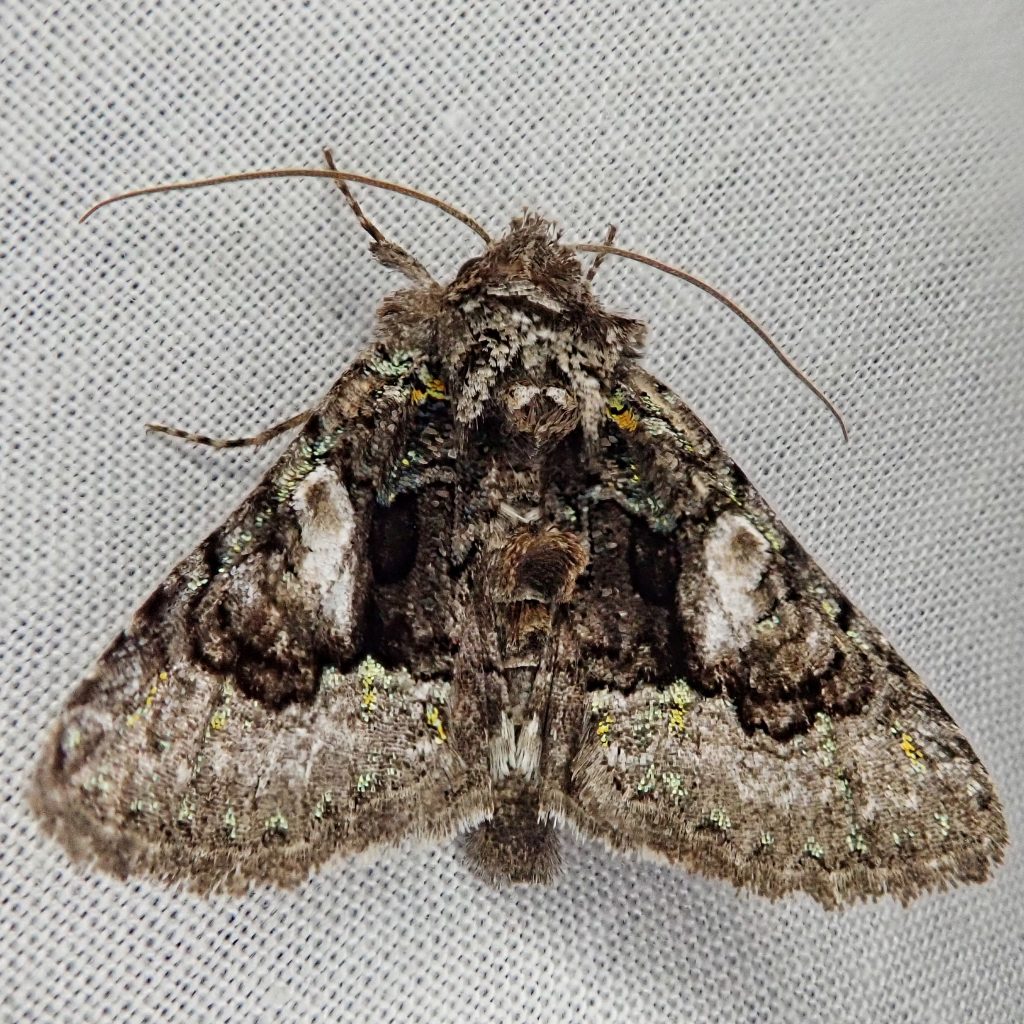
Description-Medium sized (fw length 12-14mm) grey and white moth with scattered to continuous metallic green scales in the transverse lines; darkest grey in the midsection with light grey to white orbicular spot and an indistinct reniform spot; front of forewing lighter than midsection, and rear third is even lighter grey than that; often has patches of yellow scales on the rear portion of the forewing; hindwing is greyish white.
Similar species-Nothing else in our area has the rows of green scales in conjunction with the grey and white pattern.
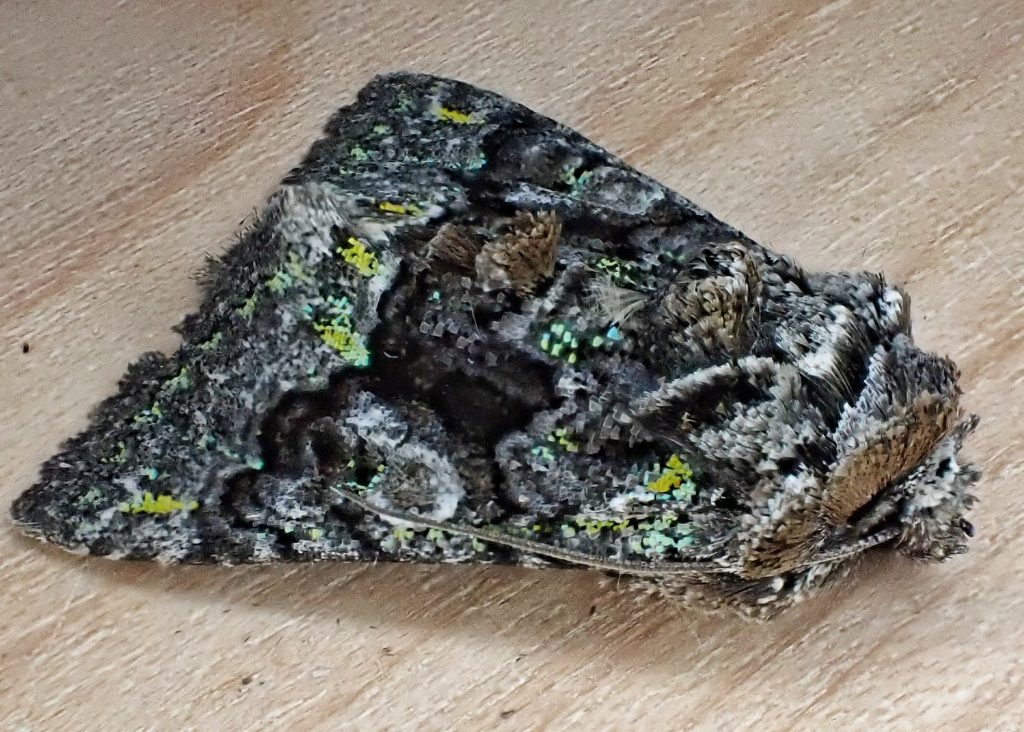
Habitat-Moist to mesic forests where its larval hosts occur.
Range-West Coast endemic; region wide in appropriate habitat.
Eats-Larvae feed on Lonicera sp. (honeysuckle) and Symphoricarpos sp. (snowberry).
Eaten by-Presumably by insectivores of all classes.
Adults active-Nocturnal; early March to mid June
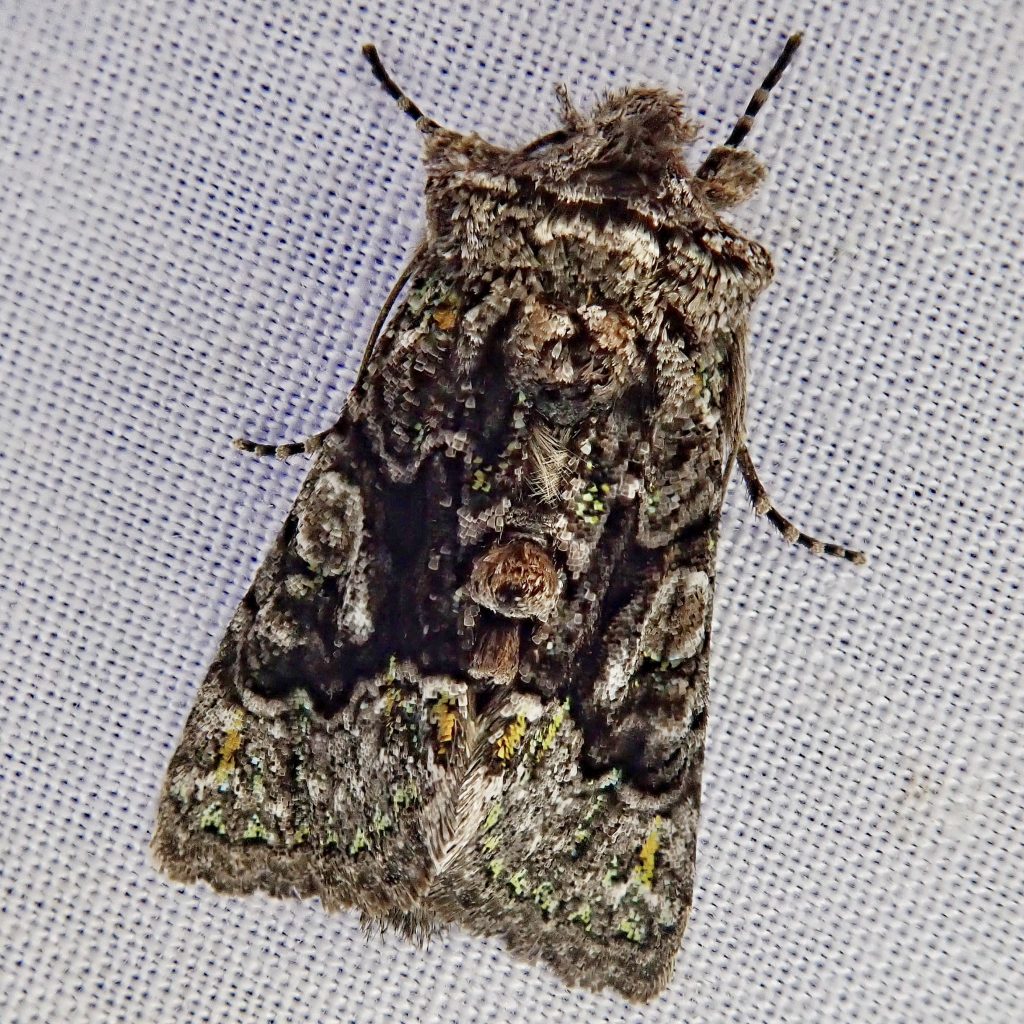
Life cycle-Adults appear in early spring so it’s assumed they overwinter as pupa; cocoon is whitish with bits of chewed wood and woody plant materials.
Etymology of names–Behrensia would appear to honor James Behrens (1824-98), a German entomologist who settled in California and collected and wrote extensively about Lepidoptera. But I can’t find confirmation of that. The specific epithet conchiformis is from the Latin words for ‘shell shaped’, and may reference an anatomical structure. But I’ve always wondered if it referred to the shiny green scales reminding the descriptor, as they remind me, of the nacre of a shell, and though I can’t find Grote’s description to see if he explained it, that’s the mnemonic I use.
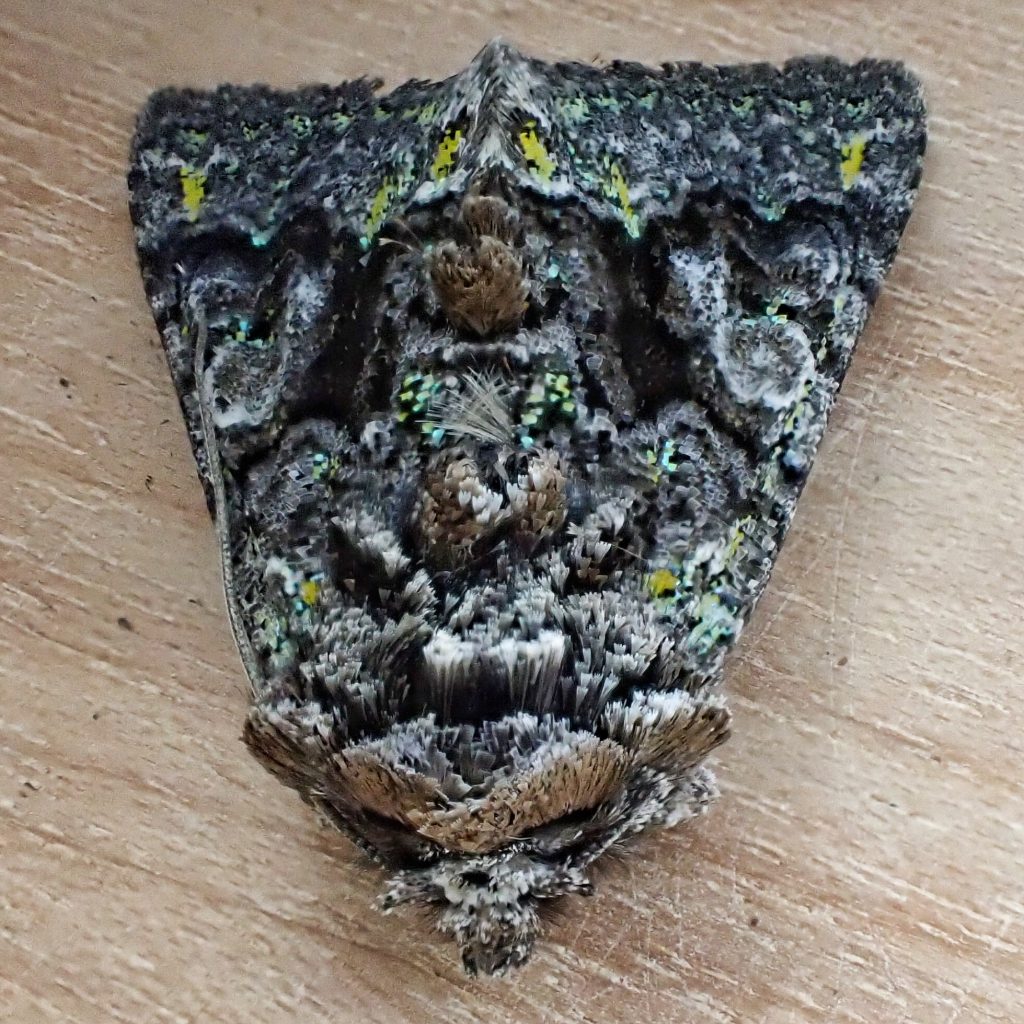
PNW Moths | Behrensia conchiformis
https://bugguide.net/node/view/143575
http://mothphotographersgroup.msstate.edu/species.php?hodges=10178
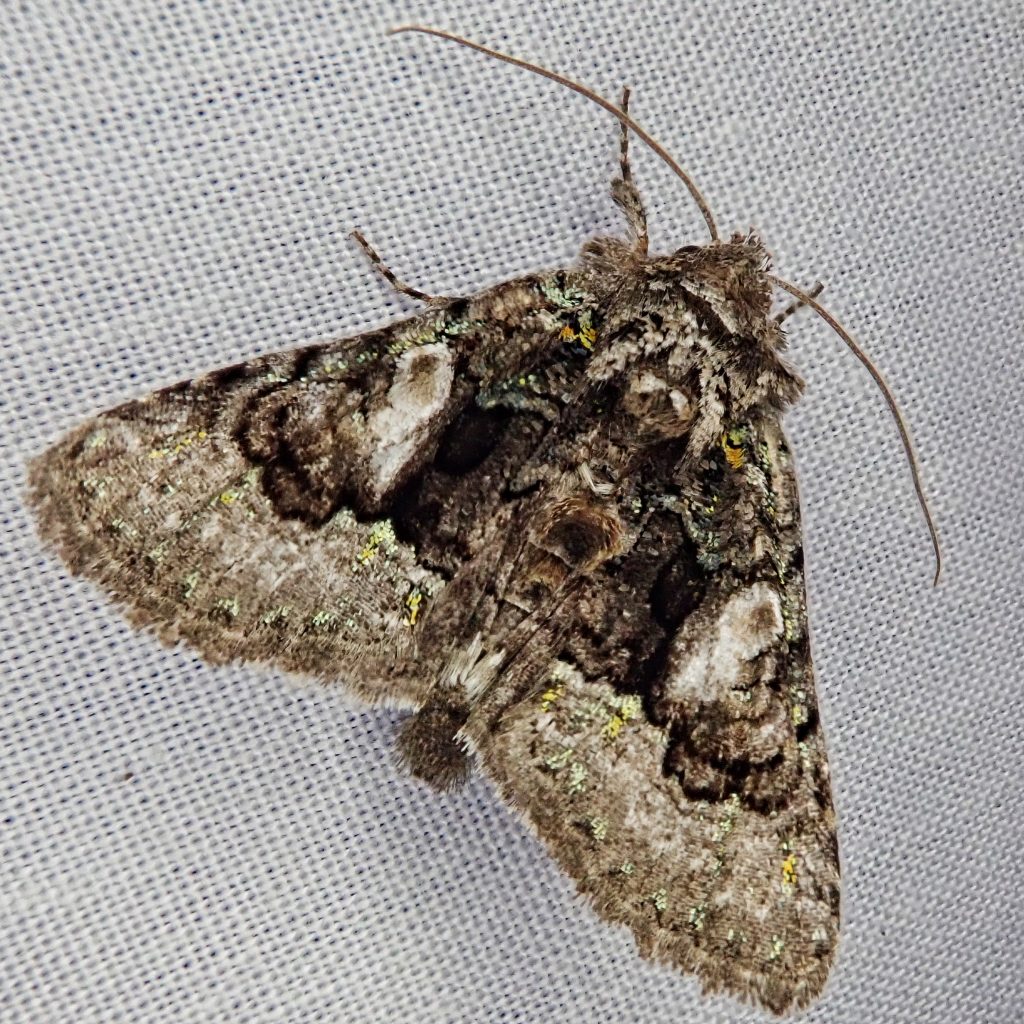
That’s another lichen moth!
What do you mean, Steve? That it looks like a lichen? Or do you know something I don’t about them eating lichen?
When I first saw the picture, the first thing I thought of was it’s a lichen. Bet it would camouflage well amidst a bunch of lichen.
I’m sure it would. It’s always interesting to me how distinctive a pattern can be against some backgrounds, and how it will disappear into others!
My thought precisely! You can almost name the species – Chrysothrix candelaris for example. If this beautiful moth isn’t a lichen mimic, then nothing is! Any chance you could send along one of your better portraits for possible use in an article? With attribution of course.
I will happily share any photos of anything with you, Trevor! I’ll send some now.